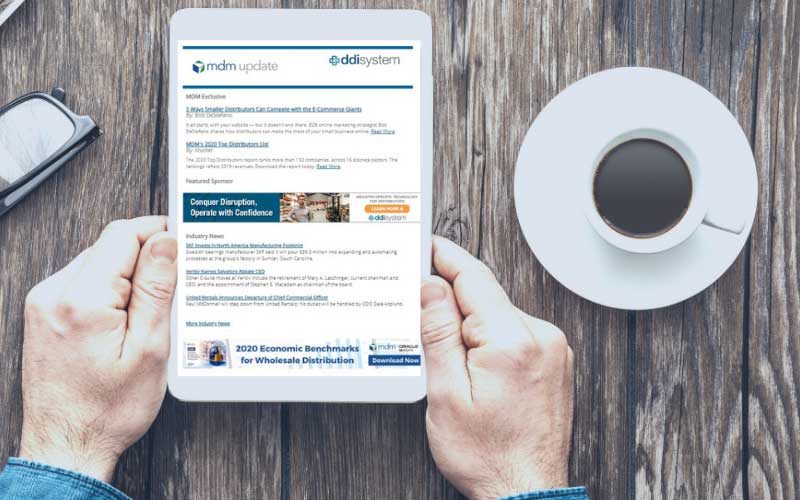If you’re a wholesale distributor, especially in the trades, you’re probably well aware of the nationwide labor shortage going on right now. The COVID-19 pandemic and rise of work-from-home culture, combined with longer-term generational shifts, has led to one of the scarcest labor markets in decades. This struggle with hiring and retention has made a lot of businesses start to reconsider their cost to serve models. How much does it actually cost for your business to serve your customers? How much has the labor shortage impacted your ability to do business?
One of the things we like to talk about often is how versatile incentive programs can be in helping a business overcome certain challenges. Though they’re often thought of primarily in terms of their ability to raise revenue, I want to consider the inverse today. How could an incentive program help lower your cost to serve amid a nationwide labor shortage?
Why is Cost to Serve Being Impacted?
A business’s cost to serve involves all the operations that surround the sale and installation of a product, such as:
- Managing customer inquiries and transactions
- Shipping and delivery
- Installation
- Maintenance
All of these roles are complex positions that require skilled workers with years of experience. If you’re having trouble getting and retaining labor for these positions, that’s going to seriously impact things.
Here’s an example: say you’re a wholesaler who’s reliant on counter salespeople to interface with your customers. In order for your business to run, they need to have a good understanding of what your customers need and what your company can supply. During a labor shortage, if you only have one counter salesperson that your customers can call for help, they’re probably going to be too flooded with requests to meet all of their needs. Bottom line, you’re going to lose business.
Furthermore, the strongest differentiators for a wholesaler are often those elements with high costs to serve. If something like expedited shipping is one of the value-adds your business offers, cost to serve might be an especially tough challenge for you right now.
With all of that in mind, how can an incentive program be used to mitigate these issues?
Where Your Incentive Program Comes In
As we’ve discussed before, an incentive program provides a whole range of opportunities for cultivating preferred behaviors among your participants – so let’s consider how to make change behaviors around efficiency in cost to serve. Broadly speaking, there are two major areas we might focus these change behaviors: delivery and purchasing.
Delivery. The cost to serve for delivery is a big one. To cut costs and make your shipping process more efficient, you might encourage your customer to make fewer, larger purchases that can be delivered in one shipment.
Or take one of our clients, a wholesaler who had to pay $120 in labor and transport for every order they shipped to their customers. Picking up an order at will-call, of course, is the far more cost-effective option, but it’s also less convenient for the customer. In order to encourage pickup over delivery, our client offered customers around $50 in points from their incentive program if they picked up their orders themselves.
Purchasing. When it comes to how you sell to your customers, refocusing on eCommerce and omnichannel offerings is a useful solution for cutting cost to serve. I know, I know – you’re probably very tired of hearing about eCommerce and omnichannel at this point. But bear with us—in this moment of major labor shortage, wholesalers are increasingly turning to these streamlined models in order to increase efficiency.
On top of making the burying process smoother and faster for customers, eCommerce options partially mitigate the need for skilled labor. If you want to kickstart your business’s digital transformation, consider using your incentive program to encourage preferred behaviors like text-to-branch ordering or online ordering, which ease the burden on your counter salespeople. In addition to incentivizing pickup over delivery, our client I mentioned earlier also offered a bonus to customers who made their purchases online.
Conclusion
The current labor market presents an unprecedented challenge to wholesalers across the country — but it’s also coming at a time when many businesses are already taking steps to increase efficiencies through omnichannel selling. Getting your customers (and your sales team) used to these changes can be tough at times, though — and that’s where incentives come in. Focus on rewarding preferred behaviors around:
- How customers are placing an order (eCommerce rather than calling or in-person)
- How they’re getting the order (pickup over delivery)
- What they’re ordering (bulk over individual orders)
Ultimately, implementing these changes will benefit your business far beyond the current labor shortage. The omnichannel model is designed to create a more concise, streamlined ordering system that saves time and labor for both the buyer and seller.
That may seem like an insurmountable transformation, especially if your business has been operating brick-and-mortar for decades. But in the end getting started is as simple as encouraging certain preferred behaviors. So, what are you waiting for?
Related Posts
-
Lincoln Smith advises on refocusing an incentive program in times of market correction in the…
-
What is loyalty marketing? Lincoln Smith explains and makes a case for using incentive loyalty…
-
The partnership will allow ISSA to utilize Staples’ training facilities to host training and certification…






